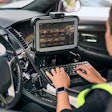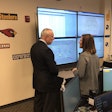As cities and counties struggle with demand for accountability in policing, in-car video systems seem an obvious and sensible solution. Unfortunately, they are not yet widely used because systems integration and durability issues with video systems available to police and sheriffs' departments have made effective implementation very challenging.
In Los Angeles, political action has pushed the call for in-car video since the tumultuous days of Rodney King nearly two decades ago. LAPD has certainly not dragged its feet on this project, but the older IT systems currently in use have created problems integrating the new video system into operations. The problem lies in connecting legacy and proprietary systems to newer, more sophisticated video systems.
Departments with more up-to-date IT systems still face another set of issues with in-car video. Earlier this year, I went on a ride-a-long with Newport Beach Police officers who have IT systems more modern than most, but their in-car DVD systems run into the same durability problems as many public safety technology products. Products initially work well, but the stress of continuous (24/7) use eventually causes them to break down. More durable military-grade systems are out there, but cities and counties don't have budgets or opportunities to purchase such systems.
Technology is never the limiting factor—capable systems exist now. Systems integration and cost planning must be well thought out to bring it to officers on the streets. Without this, the result could be disastrous. For example, Los Angeles purchased millions of dollars worth of in-car video equipment, but integrating it with current vehicles and department systems posed problems, and the department continues to struggle to make it all work together.
However, good news is on the horizon. IT professionals are starting to develop long-term plans that allow scalability and growth of systems. Such open-architecture models allow for future integration of components that may not even be available yet. This will hopefully remove many barriers currently in the path of agencies obtaining the systems they need.
Public safety officers are no doubt frustrated as political leaders ask for "go systems" without providing the leadership and funding necessary to make them happen. But this is changing too. As federal grant funding improves under stimulus plans, I believe more law enforcement agencies will have access to resources to improve systems to a level they can take pride in.













